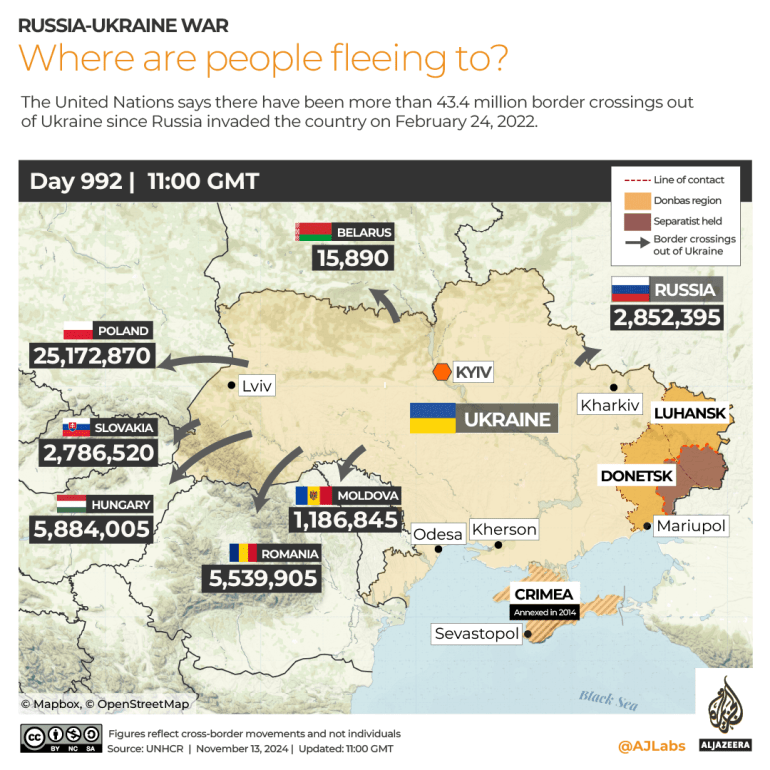Donald Trump’s US presidential election victory on November 5 has cast a sharp spotlight on what military and financial assistance Ukraine could expect from the European Union.
Trump last year pressed United States lawmakers to delay a $61.4bn military aid package to Ukraine, and claimed he would end the Ukraine war “in a day” if he won.
Ukraine was also concerned that the delivery of weapons promised under the administration of President Joe Biden be fulfilled before the handover of power on January 20.
Pentagon spokesman Pat Ryder said the US had delivered 83 percent of munitions, 67 percent of critical air defences, and 60 percent of firepower capabilities committed to Ukraine under defence packages between April and mid-October.
Russian Foreign Minister Sergey Lavrov said on Wednesday that he did not expect the start of Trump’s presidency to change the US position on Ukraine.
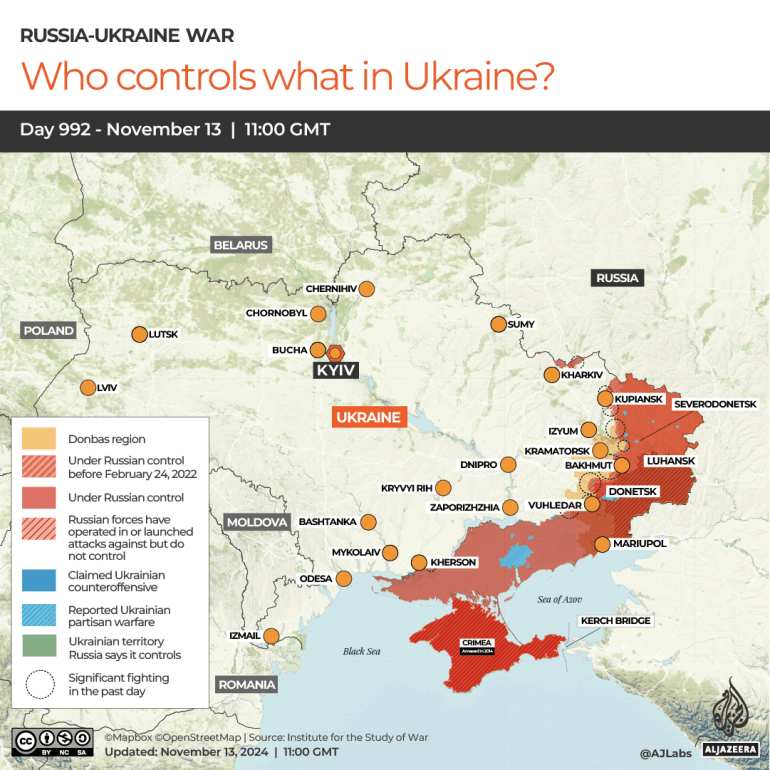
But Trump has demanded that EU member states which are also NATO members raise defence spending to three percent of gross domestic product (GDP), and threatened to let Russia do “whatever the hell it wants” with them if they refuse, suggesting US backing for NATO, and potentially Ukraine, would be conditional under his presidency.
That has raised questions about the extent of European military autonomy and political will to continue supporting Ukraine with or without a supportive administration in Washington.
EU external affairs chief Josep Borrell told European Pravda that the bloc would deliver a million artillery shells by the end of the year. Those shells were promised in spring 2023 for delivery last spring.
“We almost did it. We have already delivered more than 980 thousand shells, and very soon we will deliver one million shells,” Borrell said.
Shells purchased from around the world under a Czech initiative will have provided another half million artillery rounds by year’s end, he said.
In addition, Borrell said, EU production capacity had now ramped up to a million shells a year.
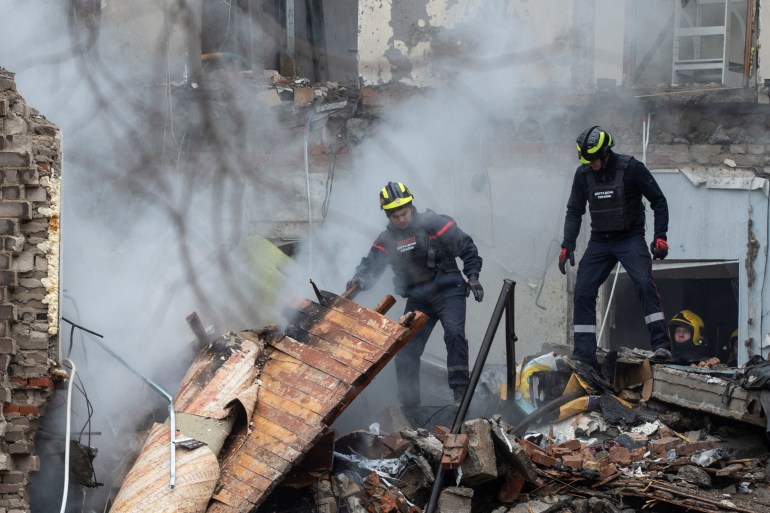
The EU has spent 122 billion euros ($129bn) supporting Ukraine since Russia’s full-scale invasion in 2022.
Should US aid come to a halt, the EU could hand over to Ukraine $300bn in Russian assets under management in the EU, and calls increased in the past week to do so.
The EU has so far agreed to give Ukraine only the profits from those assets, fearing retaliatory effects on the bloc’s currency.
Ukraine has received a first instalment of 400 million euros ($425m). At a meeting of EU directors of defence policy in Brussels on Tuesday, Ukrainian Deputy Defence Minister Serhiy Boyev asked the EU to rush a 1.5 billion-euro ($1.6bn) tranche of profits from frozen Russian assets promised this year, for investment in Ukraine’s defence industrial base.
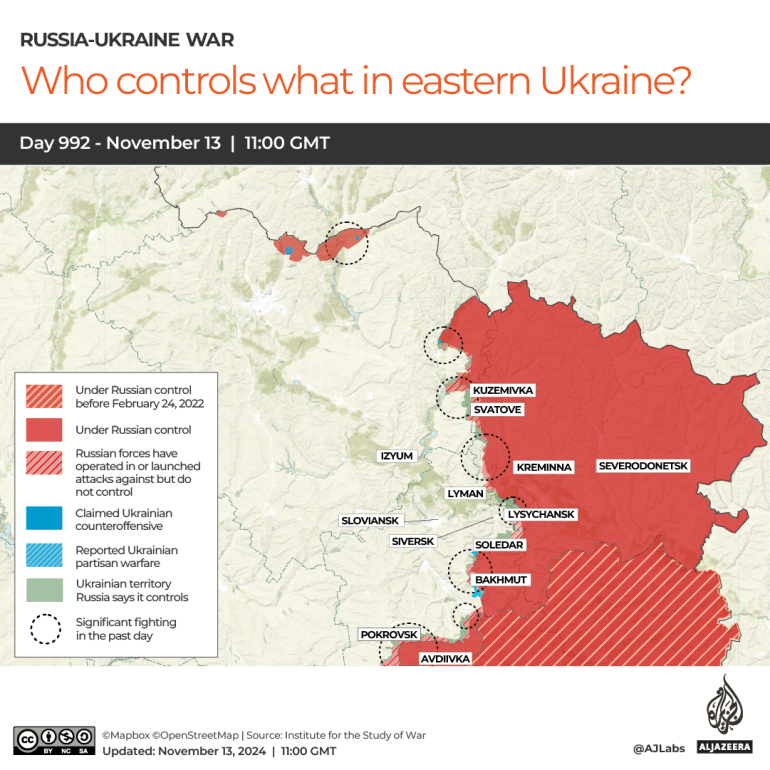
There was also renewed pressure on German Chancellor Olaf Scholz to break ranks with the cautious US policy not to use Western weapons to strike deep inside Russia, and supply Ukraine with 500km-range (310-mile) Taurus missiles, which could strike Russian airfields.
“I think it is right, unchanged, that I have made my contribution to ensuring that there has been no escalation. And I would like to make it clear, that the country that is doing the most in Europe to ensure that Ukraine is not left alone and is supported is also a country that must ensure that an escalation does not occur,” Scholz told the Bundestag or lower house of the German parliament on Wednesday.
Striking airfields would deprive Russia of its ability to launch heavy glide bombs, one of its most effective weapons against Ukrainian front lines.
A grim situation on the front lines
Vladyslav Voloshyn, a spokesman for Ukraine’s southern defences, on Saturday said Russia was intensifying the use of glide bombs in the south.
“In October, the Russians used about 500 guided aerial bombs in the southern direction, specifically on Ukrainian positions and on populated areas near the line of combat,” he said.
Ukrainian President Volodymyr Zelenskyy announced on Sunday morning that Russia dropped 800 glide bombs across the entire front in the previous week – a rate he first reported in the first week of October – which computes to more than 3,000 glide bombs a month.
In addition, Russia typically launches some 1,600 kamikaze drones and 80 missiles into Ukraine each week, Zelenskyy has said.
Ukraine’s armed forces said the Russian strategy was also continuing to bomb civilian areas in Kharkiv with glide bombs to demoralise the population. A Ukrainian counter-invasion in the Russian region of Kursk last August had produced a lull in bombardment.
“In the last few weeks, the enemy has started using guided aerial bombs again, said Volodymyr Degtyarev, a spokesman for Ukraine’s National Guard. “Mostly in the city, on civilian infrastructure, mainly in the evening or at night, although there are also daytime shellings.”
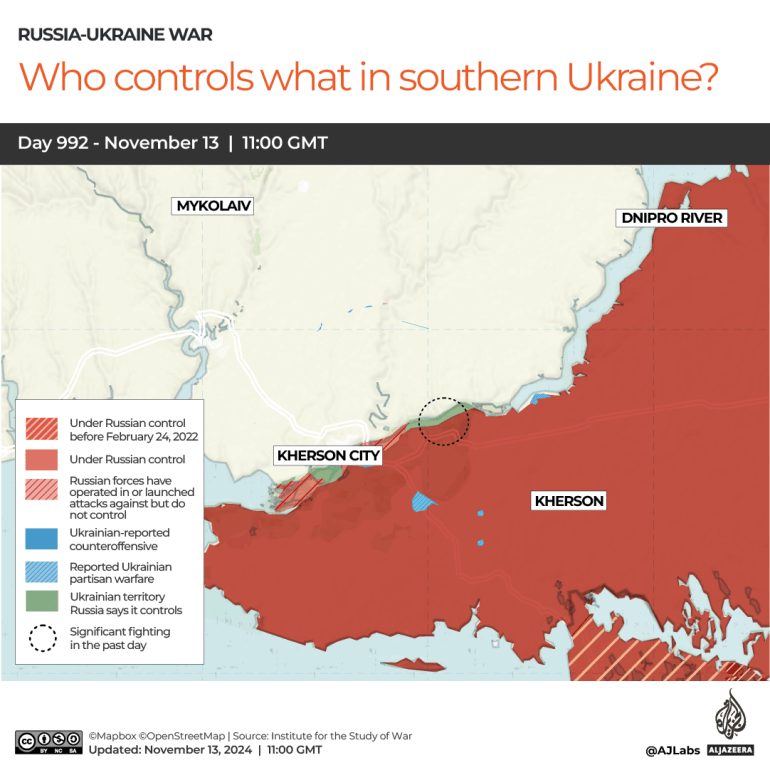
Ukraine’s defenders continued to be under intense pressure throughout the front in the past week, with the Russian hammer falling hardest on Kurakhove and Pokrovsk, front-line towns west of Donetsk city.
Ukraine’s General Staff reported 125 combat clashes on Monday, most in the direction of Pokrovsk, with Kurakhove remaining a “difficult situation”.
Zelenskyy sent reinforcements to those two directions, but it appeared that by Tuesday Russian troops were advancing along Zaporizkyi Street in northeast Kurakhove.
One of Ukraine’s greatest concerns has been Russia’s ability to absorb losses of men and armour in this war.
Colonel Vadym Mysnyk, a spokesman for Ukraine’s Siversk group of forces, told a telethon that Russian assaults typically started with armour, followed by waves of infantry at 10-15 minute intervals, a tactic which led to high attrition rates for the Russians.
Russian assaults have clearly been bloody, with Russian casualties last week at 9,800, according to Ukraine’s Ground Forces Commander Oleksandr Pavlyuk – confirming the daily rate of about 1,400 casualties observed since June.
Yet reinforcements have kept coming, leading Ukraine to counter-invade Kursk in order to pin down Russian troops there, preventing them from joining the front against beleaguered defenders.
Zelenskyy said in his evening address that 50,000 Russian troops were being held at bay in Kursk, noting “Our men are holding back a fairly large grouping of Russian troops – 50,000 of the occupier’s army personnel, who, due to the Kursk operation, cannot be deployed to other Russian offensive directions on our territory.”
The propaganda war
Donald Trump’s first US cabinet picks were unlikely to have inspired Ukrainian confidence in the continuity of US support.
On Wednesday, Trump nominated former US House Representative Tulsi Gabbard for the position of director of National Intelligence.
“This war and suffering could have easily been avoided if Biden Admin/NATO had simply acknowledged Russia’s legitimate security concerns regarding Ukraine’s becoming a member of NATO, which would mean US/NATO forces right on Russia’s border,” Gabbard posted on X when the war began.
That echoed the argument made by Russian Foreign Ministry spokesperson Maria Zakharova on Wednesday – that the war could end the moment Western support for Ukraine stopped.
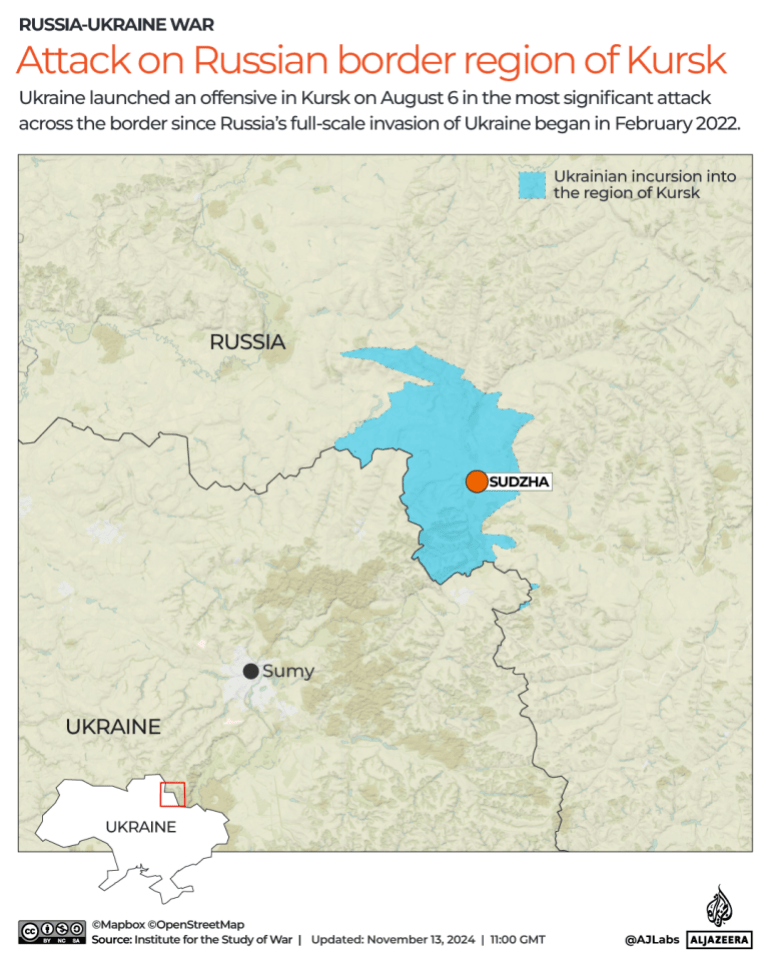
Russian President Vladimir Putin last week repeated the Russian position, portraying a war Russia started as a Western initiative to crush Russia.
“The West’s calls to inflict a strategic defeat on Russia, a country with the largest arsenal of nuclear weapons, demonstrate the extreme adventurism of Western politicians,” he told the Valdai Discussion Club on November 7.
“The volume of sanctions, punitive measures applied to our country, has no equivalent in history. Our opponents assumed that they would deal Russia a crushing, knockout blow, from which it would simply not recover, and would cease to be one of the key elements of international life.”
“Here comes Russian propaganda, which falsely claims that ‘by supporting Ukraine, you are continuing the war’,” said Borrell in his interview. “’If you love peace, you should stop supporting Ukraine’.
“To counter this propaganda, we must explain to people that peace is not just the end of war. Peace through the surrender of Ukraine, or a story that will lead to the establishment of a puppet government in Kyiv, as in Belarus – then we will get the disintegration of Ukrainian society and see the Russian army on the Polish border. This is against not only our values, but also our interests.”
